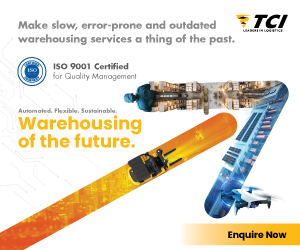Improve plant equipment reliability by choosing right bearing guard
By admin February 17, 2014 6:33 am IST
Proper bearing seal is a surest way to maximise rotating equipment effectiveness and reducing plant failures
In today’s highly competitive environment, pressure to keep the equipment performing increases year on year. Equipment inefficiencies cannot be passed onto the consumer through elevated selling prices; therefore, these inefficiencies eat into the plants profit margins, endangering jobs, communities and livelihoods.
Plant downtime, lost production, increased plant maintenance and increased refurbishment costs are real concerns for reliability engineers around the world.
Research into bearing failuresReliability by numbers: 52 per cent of bearing failures. A 2007 study into equipment reliability conducted at a major US oil refinery has published statistics on causes of equipment failure. They concluded that 40 per cent of overall rotating equipment failures (pumps, mixers etc.) were due to bearing failure.
They further estimated that 48 per cent of all bearing failures were due to particle contamination and a further 4 per cent were due to corrosion (caused by liquid in the oil).
Therefore, 52 per cent (total contamination cause) of 40 per cent (bearing failures) = 20.8 per cent of all rotating equipment failures are caused by contamination of the bearing oil.
Cause categories equipment failureIt is, therefore, important that fitting proper bearing seals is a fast and sure way to maximise rotating equipment effectiveness and reduce up to 20 per cent of the total plant failures.
What are “proper” bearing seals?The first place to look is the premier pump specification, API610 Ed10, section 5.10.2.7, which states “replaceable Labyrinth-type” or “magnetic-type end seals” states that “lip-type seals shall not be used”.
The word “replaceable” is an important word to note as it generally provides the first distinction between a bearing seal specifically designed for the reliability-focused individual and one which is an afterthought, which has typically been machined integrally into the bearing plate by the OEM (30 years ago), to save cost.
Section 5.1.25, of the specification goes on to state that said devices “….shall be designed to minimise contamination by moisture, dust, and other foreign matter during periods of operational and idleness.”
The design differences of Labyrinth sealsThere are many types and configurations of non-contacting Labyrinth seals.
Cookie Consent
We use cookies to personalize your experience. By continuing to visit this website you agree to our Terms & Conditions, Privacy Policy and Cookie Policy.
















